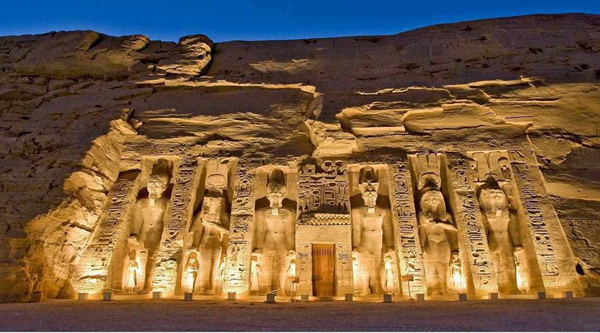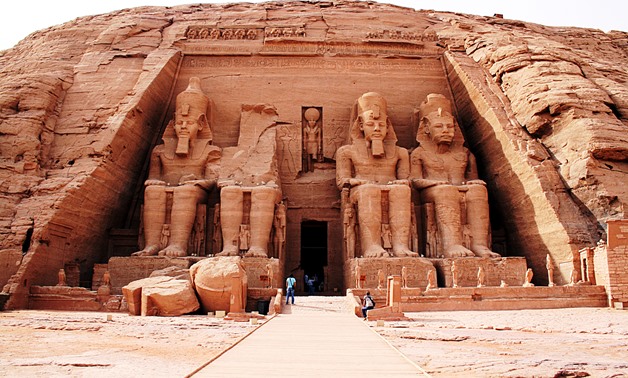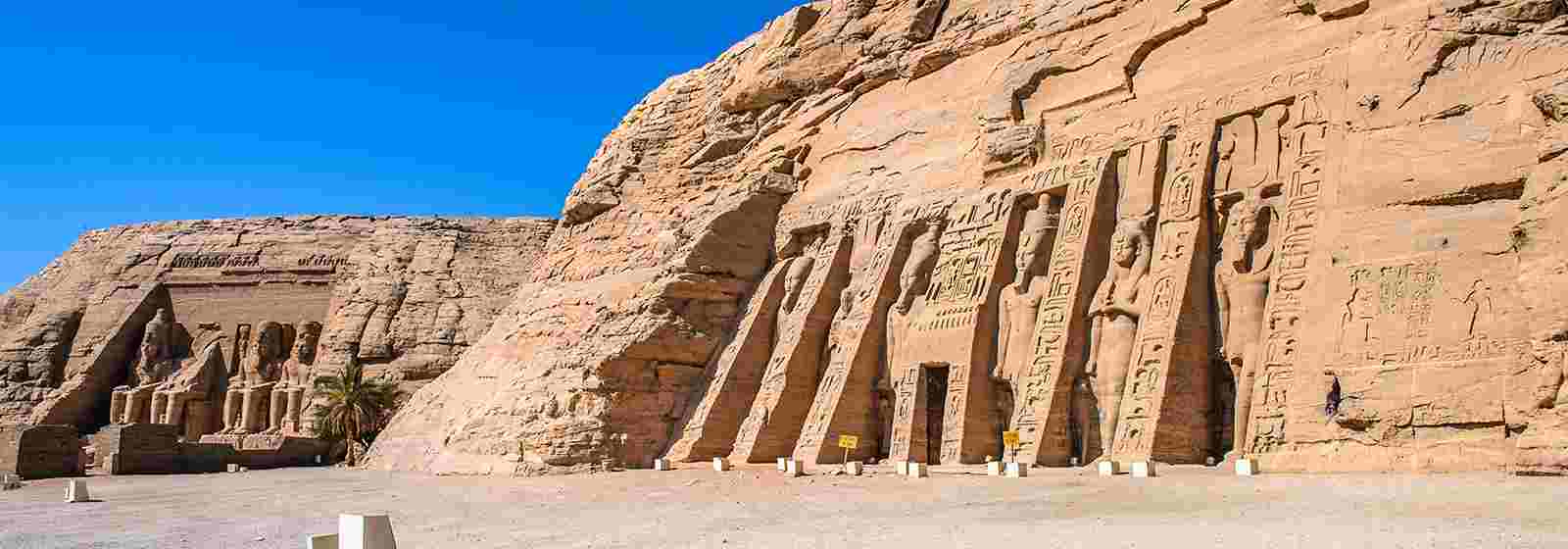- Aswan Attractions
- Shoroq Samir
Abu Simbel Temple in Egypt
The two rock temples of Abu Simbel, mighty monuments of the "Builder Pharaoh" Ramesses II, are the southernmost on the soil of modern Egypt. In antiquity, the territory of Abu Simbel was part of Lower Nubia, among the whose conquered population the presence of the massive temples was intended to inspire the awe of Pharaoh's majesty. you can visit the temple during your Egypt travel, just choose a package for your holiday from Nile Cruise and Luxury Egypt Tours categories.

Abu Simbel Temple
Ever since Belzoni first entered the main temple in 1817,
after having painstakingly cleared its entrance of a deep layer of sand which obstructed it, the temple has not ceased to amaze its visitors by virtue of its imposing size and the uniqueness of its design. Following the construction of the High Dam at Aswan city, Abu Simbel attracted additional attention on account of the international effort to salvage its temples from the rising waters of Lake Nasser threatened to engulf them. A team of experts actually cut the mountain slope which contained the temples into many transferable blocks, and reassembled them on a safer site nearby. The success of this gigantic project has preserved for posterity a unique heritage of Pharaonic Egypt.
Facts Of Abu Simbel Temple
-The main purpose of the temples was to glorify the king in
-his divine aspect, as well as his principal queen Nefertari. In fact, the main temple was dedicated to both the king and the solar falcon god Re-Horakhty, to whom were added Amon-Re of Thebes and the Memphite god Ptah. Rock-cut effigies of these four deities (Ptah, Amon-Re)
-the divinized Ramesses II and Re-Horakhty) sitting side by side decorates the back wall of the temple, in its inner sanctuary. Similarly, the lesser temple, cut farther to the north, belonged to both the Queen Nefertari and the god of Hathor.
-Quite a few rock shrines are known from ancient Egypt , but nothing comparable in size and splendour to the temples of Abu Simbel.
Abu Simbel Temple Interior Design

The salient feature of the main temple consists of four gigantic statues of Rameses II sitting on his throne, in front of the entrance. They were cut into the native sandstone to a height of 20 meters. Long rows of bound prisoners, Nubians and Asiatics, decorate the sides of their massive pedestals, under the king's trampling feet.
The entire facade, 35 meters wide and 31 meters high, has the trapezoidal shape of a pylon, cut in the rock. Above the gate, the king is represented offering to Re-Horakhty.









